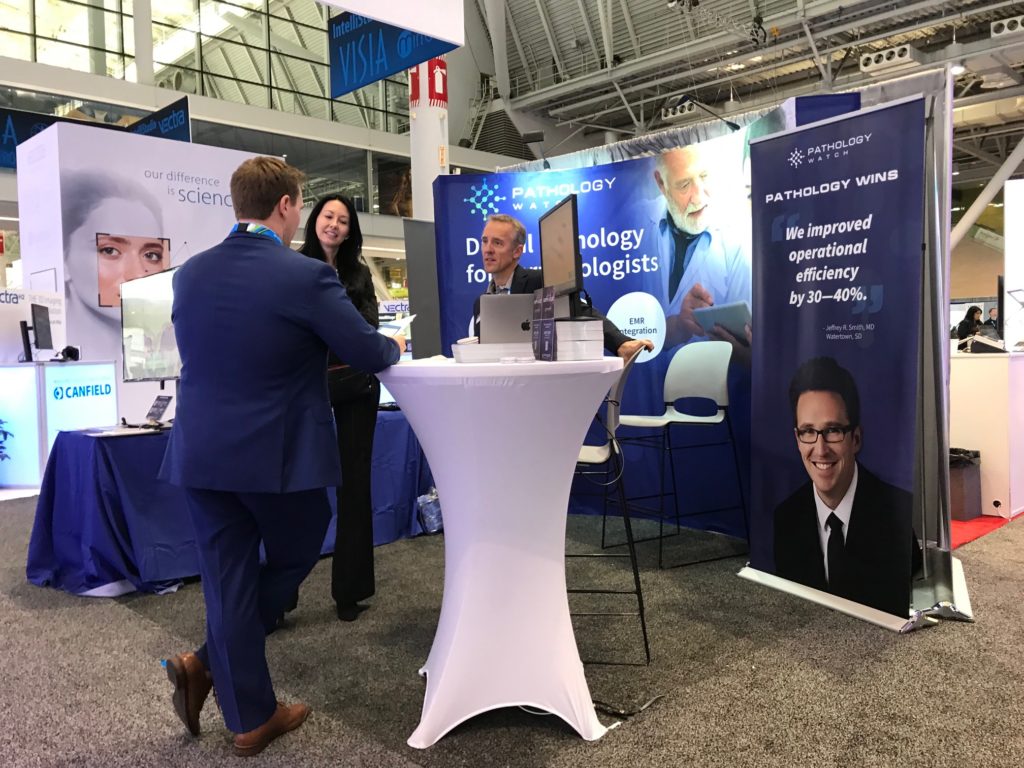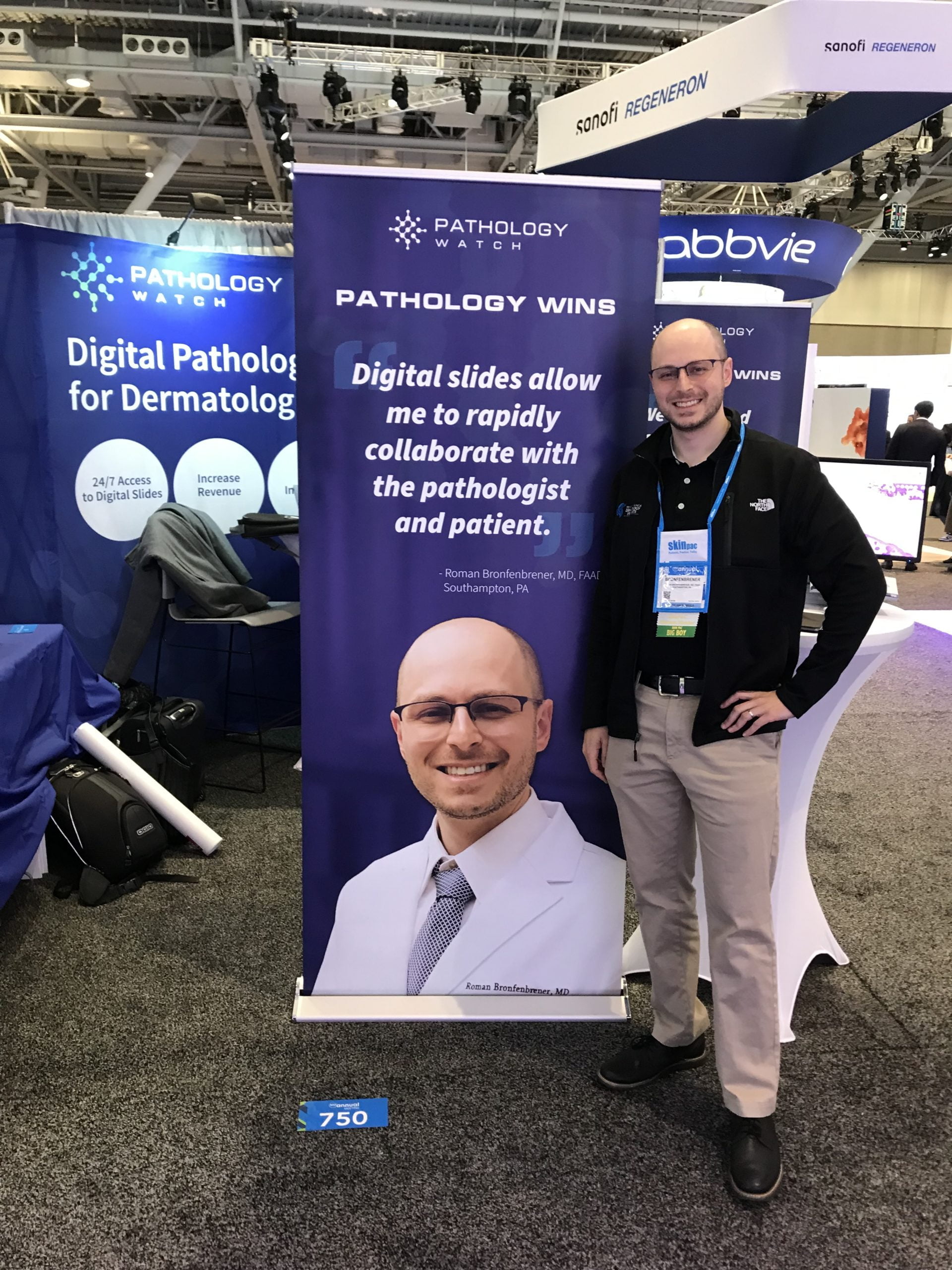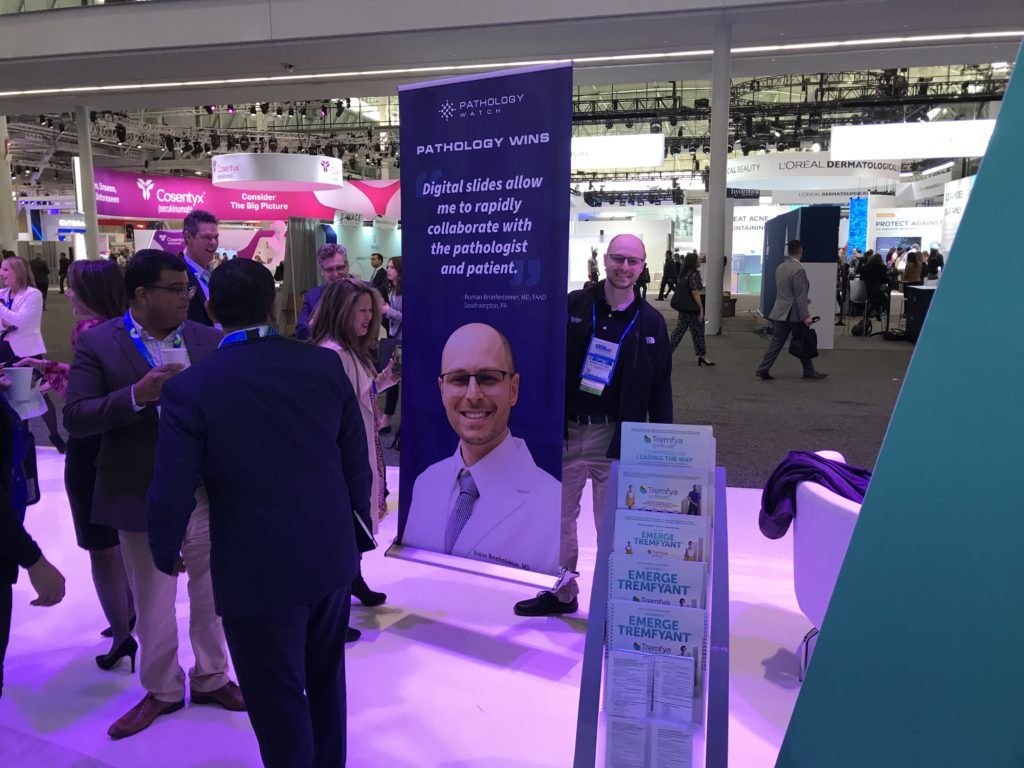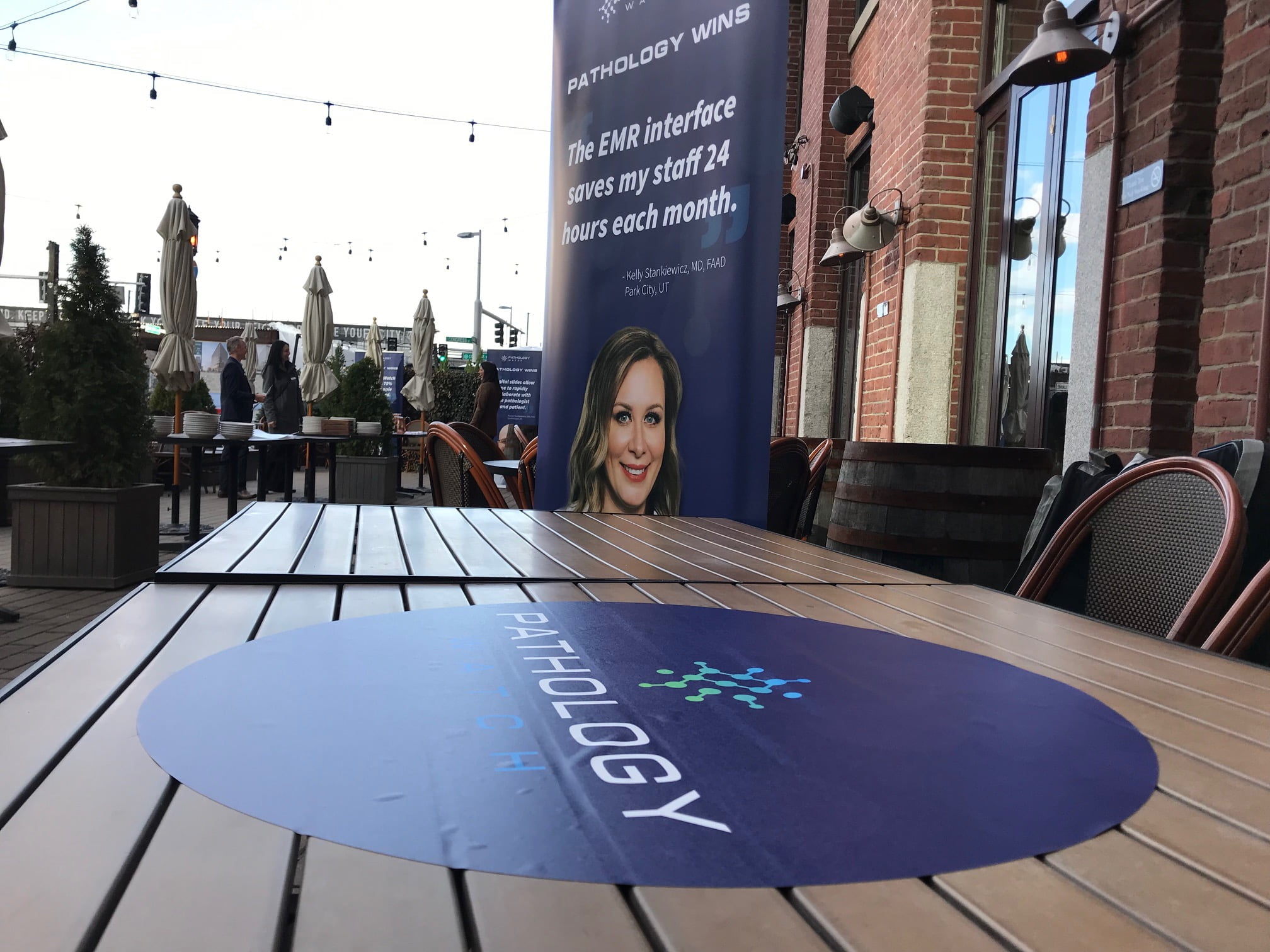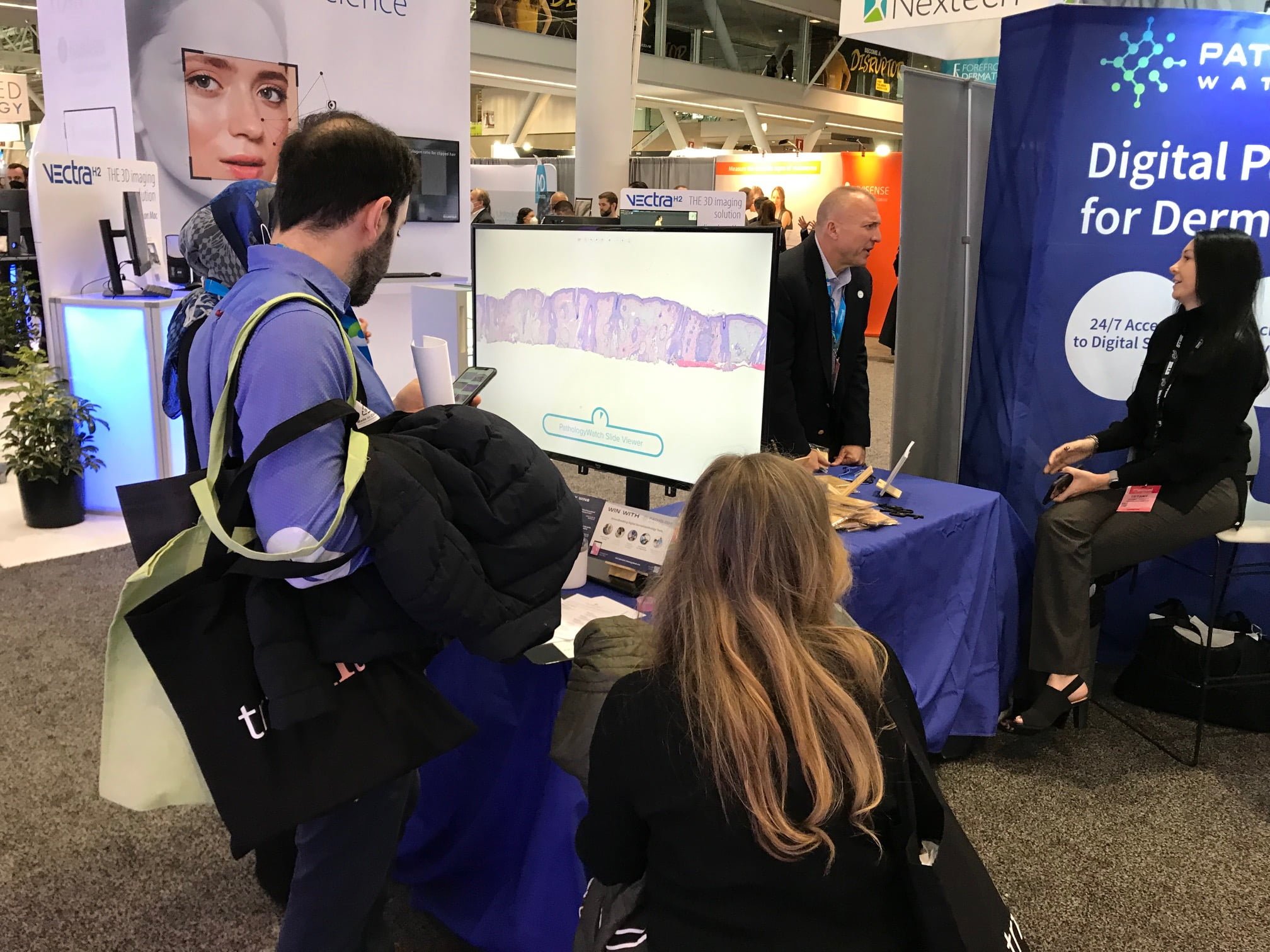PathologyWatch CEO Dan Lambert Discusses the Future of Digital Pathology on The DaVinci Hour Podcast
At the forefront of these advancements, PathologyWatch is a full-service dermpath lab that effectively combines groundbreaking digital dermatopathology tools with the quality of customer care expected from a local provider.
Dan Lambert, PathologyWatch CEO, recently met with Dr. Maxwell Cooper of The DaVinci Hour Podcast to discuss the role of AI in current pathology workflows, the hurdles faced in the push for digital pathology, and the efficiency created by relying on these newer technologies.
The full episode can be found here. These are a few of the highlights from the interview:
Dr. Cooper: Tell us a little bit about PathologyWatch, like what was the impetus for starting it, and what . . . do you guys offer to dermatology practices?
Dan Lambert: We looked at this market and said, “How are we going to actually introduce the AI in a way that the market will truly adopt it?” And the more that we looked at it, it didn’t make a lot of sense to just develop the AI as a tool and then try to license it. It really needed to be a part of the laboratory, a part of the process, a part of the workflow of the physician. . . .
There are a few reasons why this process is so much better than what existed before. As you know, most [pathologists in residency] are using digital pathology to learn and study, and then they get out in the real world, and the industry is mostly microscopes and fax machines. . . . We’re replacing these very old systems with an entire end-to-end software process that takes out those fax machines, that takes out the microscopes.
A few very specific reasons why we’re growing so fast (we’re in about 70 dermatology clinics and we just started selling about two years ago): The first one is that there can be some potential financial upside for the dermatologist to view the case digitally because, even though we’re providing the primary console, if you look at the case on a secondary console, there may be potential opportunities for increased case complexity, for example.
Secondarily, it’s also just simply better patient care, but you now have both the dermatologist and the dermatopathologist or the general pathologist looking at the case.
Other reasons: On average, we see about 25 hours of labor reduction in the dermatologist’s office because, instead of them having to deal with fax machines, we’re integrated with ModMed, EZDerm, and eClinicalWorks—all the major EMRs for our field. Going digital also enables a whole new world of being able to very easily send the case to expert consults anywhere or have your primary dermatopathologist be really anywhere in the world. And so it’s freeing up a lot of labor that otherwise would have had to be right there in the lab. I think all those pieces together make this really transformational, and that’s why we’re getting so much adoption very quickly.
Dr. Cooper: It sounds like you’ve really brought a significant amount of efficiency to what . . . previously was somewhat of an outdated process. I guess I’m wondering, as you know, physicians—and medicine at large—is resistant to change and cannot always be the best about adopting new technology or new ways of doing things. What were some of the hurdles or maybe some of the skepticism you received at first, and how did you convert those dermatologists that may have been skeptical at first to adopting your services?
Dan Lambert: Yeah, I think that’s really true. And I think those first two or three clients were so much harder than the last two or three clients. At this point, it’s very well validated, and I think everyone’s more comfortable using digital, and we don’t get as much pushback anymore. But I think early on, it was a question of “How do we know if digital is safe? How do we know that the scanner picked up all the tissue?” Actually, the scanners have really good controls in them, and we’ve fine-tuned the scanners over time to be really safe. We do use some redundant imaging to make sure that there’s not a piece of tissue that’s missing. And then also convincing the community that algorithms can really help detecting blurry spots or screening out things that happen inside the lab where the case really needs to go back and the slide needs to be redone. You know, a very common problem in pathology. . . .
[When all their conditions are aligned], they say, “Okay, you know what, I’m willing to give this a shot.” And they tend to not send all of their volume up front—they send a few samples, make sure they can see the digital, make sure that the quality of the reports is good and they’re definitive diagnoses. And then they start sending more and more; and I think that’s become a very common pattern.
I think, in general, pathologists are fairly resistant about being automated out of a job. I think that concern is in your field as well, in radiology, but we’re just not finding that. This is technology designed to assist and help go faster. Really excellent dermpaths are not going to be replaced by AI in the next few years, realistically. I think it’s an important concept to understand. Also, reimbursements are being cut; there does need to be ways to make pathology more efficient, and I think this is an answer, and the more-forward-thinking pathologists actually are really embracing this and getting involved. That’s exciting to see: that the community is moving things forward, too. . . .
Dr. Cooper: What’s some of the positive feedback you’ve received from your clients? What have they told you [about] how this has changed their practice? How has this improved things? What are a couple of the positive comments you’ve received?
Dan Lambert: We actually have about 15 case studies—and for anyone that’s interested, we do share these case studies pretty openly. Our website is PathologyWatch.com. . . .
[One piece of feedback we’ve received] is improvement in the turnaround time because we’ve developed local laboratories in multiple locations. We’re getting really good turnaround.
The second thing is the savings on just the time in the dermatologist’s office dealing with faxes or auto faxes—we’re eliminating a huge portion of that. We use enhanced interfaces that deliver the results directly attached to the patient record, so it’s a lot safer that way too. So you’re not putting the wrong patient record in the wrong chart.
Also the ability to see the case—to see what the lab is seeing. That ability means that you can call up the pathologist, and you can both be looking at the case at the same time to discuss that case. In some ways, it has actually increased the amount of communication which has a lot of benefit to the patient.
And then, overall, elimination of errors. Our labs certainly have a much lower error rate than general labs because it is software-based, and we do have patient identification controls that are better than other locations. So it’s a whole slew of benefits. . . .
I think that we can genuinely help a lot of practices move away from how it works right now.

